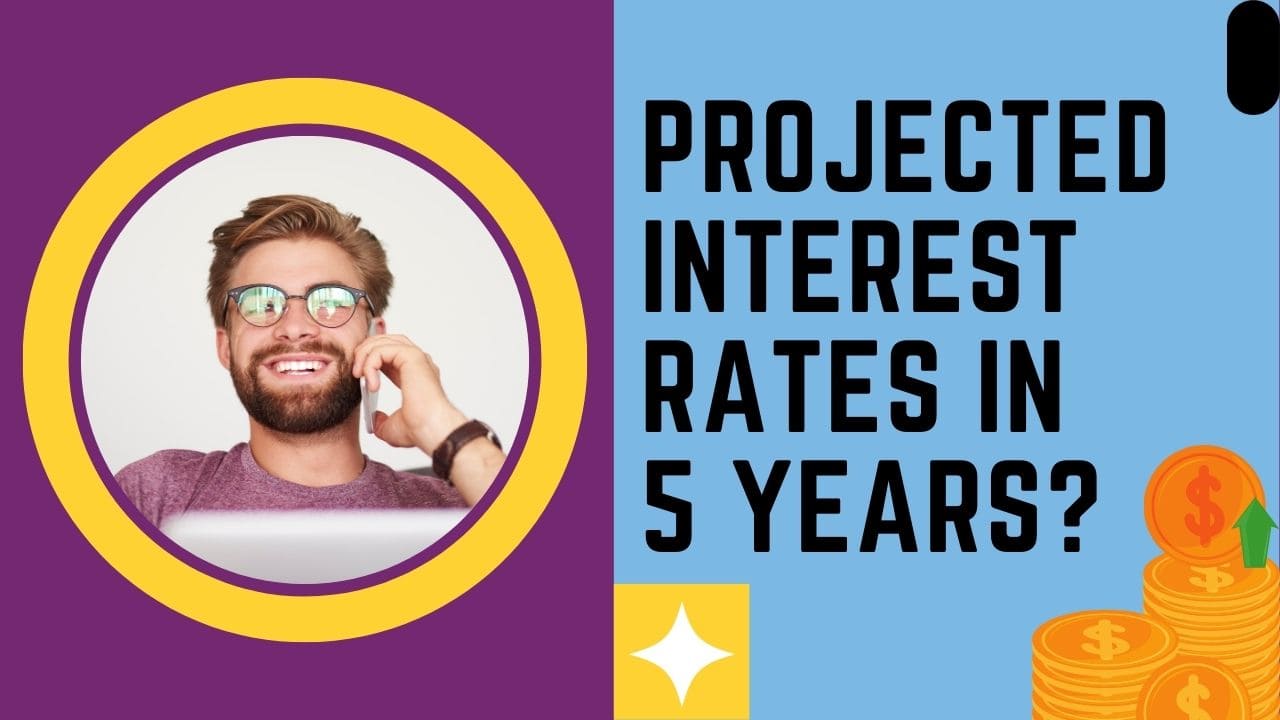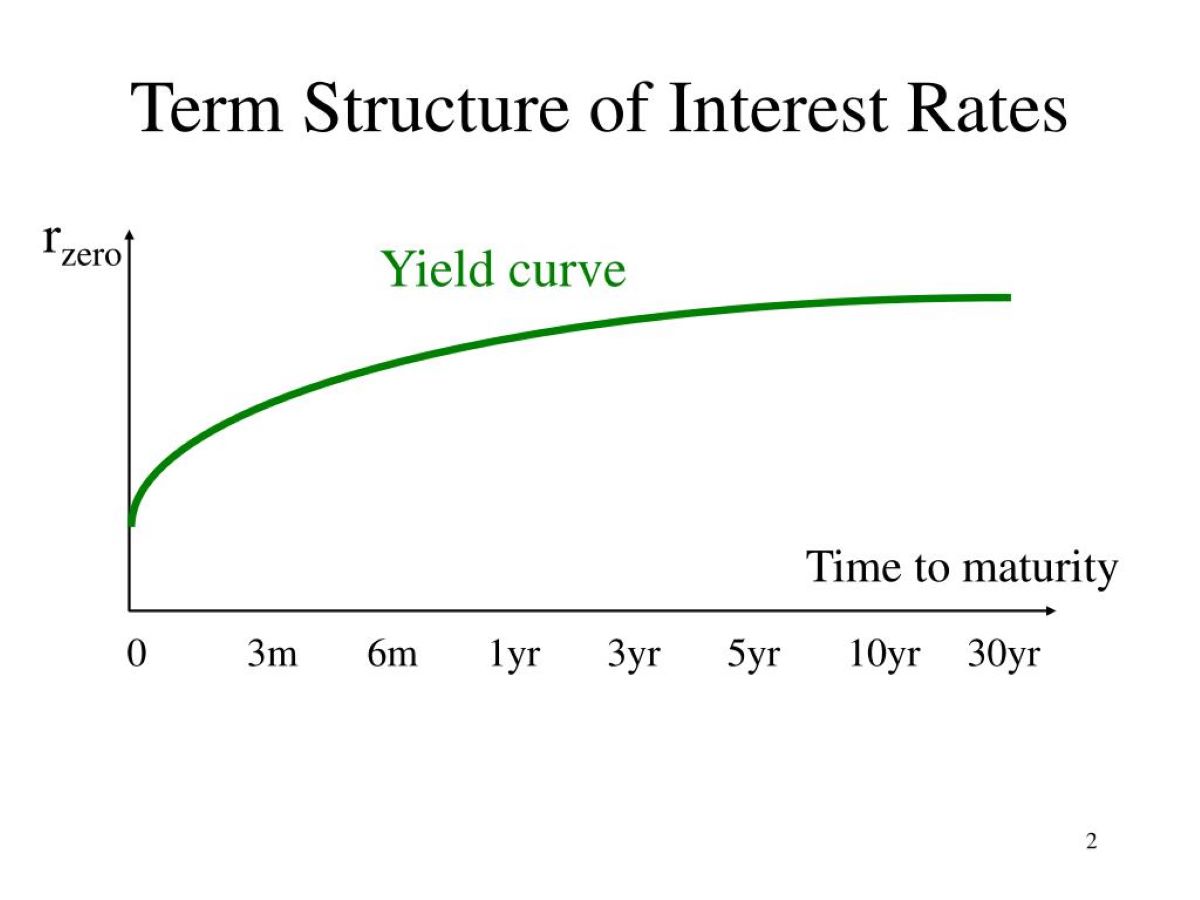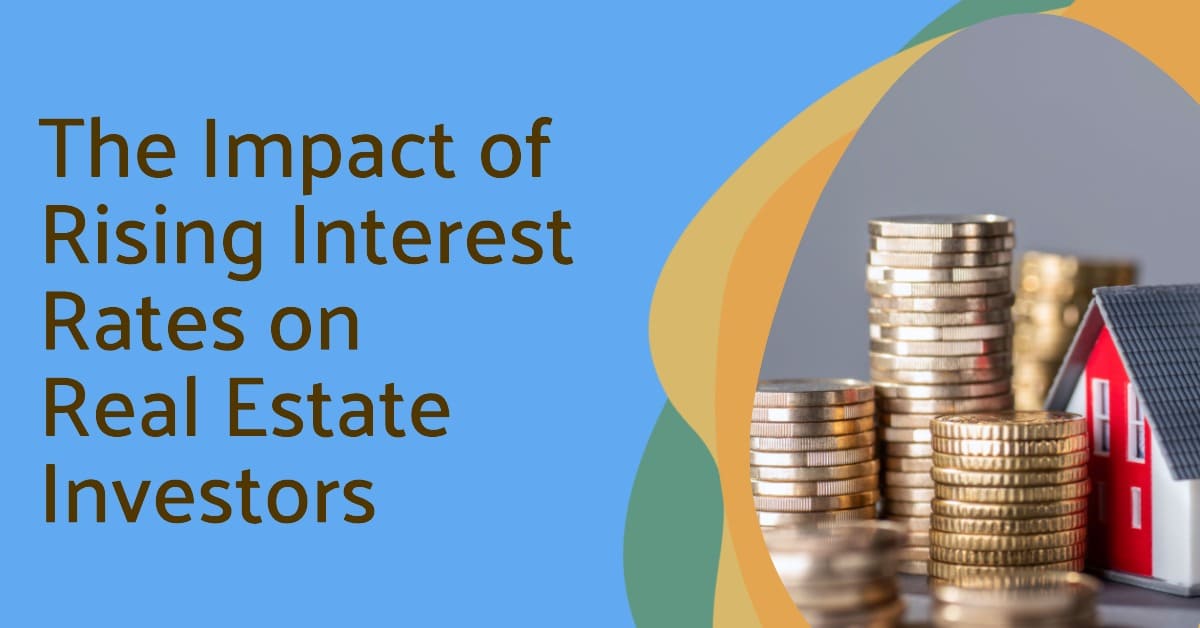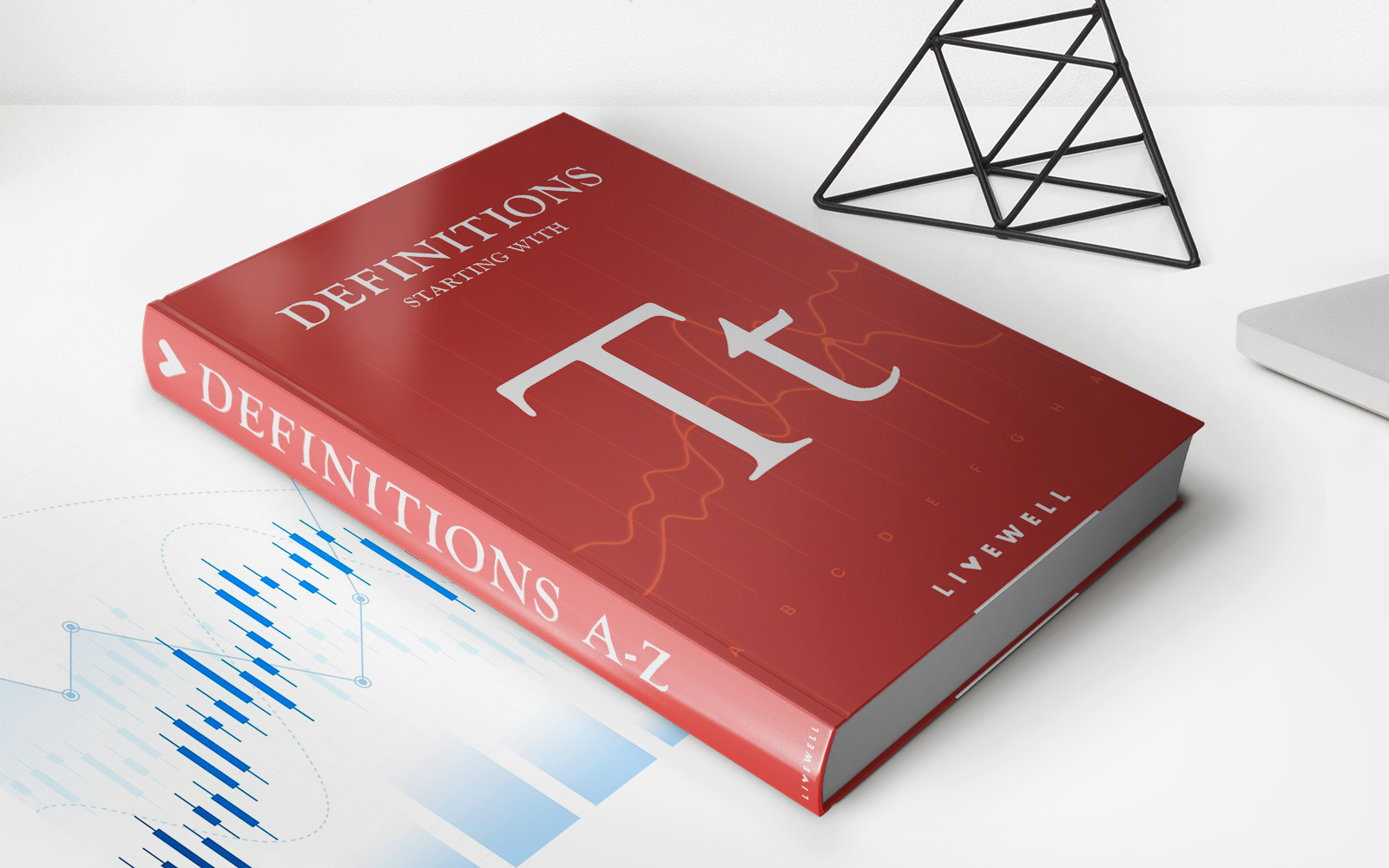Home>Finance>What Expectations Are Investors Likely To Have About Future Interest Rates?


Finance
What Expectations Are Investors Likely To Have About Future Interest Rates?
Published: November 2, 2023
Discover what expectations investors have about future interest rates in the field of finance. Stay informed with expert insights and make well-informed investment decisions.
(Many of the links in this article redirect to a specific reviewed product. Your purchase of these products through affiliate links helps to generate commission for LiveWell, at no extra cost. Learn more)
Table of Contents
Introduction
With the constant ebbs and flows of the financial world, investors are always on the lookout for potential opportunities to maximize their returns. One key factor that influences investment decisions is the expectation of future interest rates. Understanding what expectations investors are likely to have about future interest rates can provide valuable insights into market trends and inform sound investment strategies.
Interest rates play a pivotal role in the economy by influencing borrowing costs, spending patterns, and overall economic growth. Investors closely monitor changes in interest rates as they can impact the profitability of various investment vehicles such as bonds, stocks, and real estate. Anticipating future interest rate movements can help investors stay ahead of the curve and take advantage of favorable market conditions.
To gain a comprehensive understanding of investors’ expectations about future interest rates, it is essential to consider various factors that influence these expectations. Historical perspectives, economic indicators, central bank policies, and market sentiment all contribute to shaping investors’ outlook on interest rates.
In this article, we will delve into these factors to explore what expectations investors are likely to have about future interest rates. By examining the historical context, analyzing economic indicators and forecasts, understanding central bank policies and statements, and considering market sentiment and investor behavior, we can gain insights into how investors perceive and anticipate interest rate changes.
Through this exploration, investors and financial professionals can enhance their ability to make informed decisions about their portfolios. By aligning investment strategies with expectations about future interest rates, it becomes possible to navigate the financial landscape more effectively and potentially generate higher returns.
This article will provide a comprehensive analysis of the factors influencing investors’ expectations about future interest rates. By understanding these expectations, investors can position themselves strategically in the market and optimize their investment decisions.
Historical perspective on interest rates
To understand investors’ expectations about future interest rates, it is crucial to examine the historical context of interest rate movements. Looking back at past trends and patterns can provide valuable insights into how interest rates have fluctuated and the factors that have influenced these changes.
Interest rates have had a long history of volatility, driven by various economic and geopolitical factors. In times of economic expansion, central banks often raise interest rates to curb inflation and manage economic growth. Conversely, during periods of economic contraction, central banks tend to lower interest rates to stimulate borrowing and spending.
Over the past few decades, the global economy has witnessed significant shifts in interest rate trends. In the 1980s and early 1990s, interest rates soared to combat high inflation levels. The Federal Reserve in the United States, for example, implemented aggressive tightening measures to bring inflation under control. As a result, interest rates reached staggering levels, with the federal funds rate peaking at nearly 20% in the early 1980s.
However, in the late 1990s and early 2000s, interest rates started to decline as central banks shifted their focus towards stimulating economic growth. The years following the global financial crisis of 2008 saw exceptionally low interest rates as central banks implemented unconventional monetary policies to support credit markets and spur economic recovery.
It is important to note that interest rate movements are not uniform across countries. Different economies experience different degrees of inflation, economic growth rates, and perceived risks. As a result, interest rate differentials can arise, creating arbitrage opportunities and impacting global capital flows.
By studying historical interest rate trends, investors can gain insights into how interest rates have responded to various economic and financial situations. This historical perspective can help investors form expectations about future interest rate movements, considering similar circumstances and market dynamics.
Understanding the historical context is a valuable tool for investors, as it allows them to identify potential patterns, anticipate market reactions, and adjust their investment strategies accordingly. However, it is important to remember that historical trends are not foolproof predictors of future interest rates, as the economic and geopolitical landscape is constantly evolving.
In the next sections, we will explore other key factors that influence investors’ expectations about future interest rates, such as economic indicators and forecasts, central bank policies and statements, and market sentiment and investor behavior.
Factors influencing expectations of future interest rates
Investors’ expectations about future interest rates are shaped by a multitude of factors that reflect the current economic landscape and market dynamics. By considering these factors, investors can gain insights into the direction of interest rates and adjust their investment strategies accordingly.
1. Economic indicators and forecasts: Key economic indicators such as GDP growth, inflation rates, employment figures, and consumer spending can provide valuable insights into the state of the economy. Investors closely monitor these indicators and analyze economic forecasts to gauge the potential impact on future interest rates. For example, strong economic growth and rising inflation may signal the need for the central bank to raise interest rates to prevent an overheating economy.
2. Central bank policies and statements: Central banks play a crucial role in shaping interest rate expectations through their monetary policy decisions and public statements. Investors pay close attention to central bank meetings, policy announcements, and speeches by central bank officials to gauge the direction of interest rates. A hawkish stance, indicating a potential interest rate increase, can influence investor expectations and prompt adjustments in investment strategies.
3. Market sentiment and investor behavior: Market sentiment and investor behavior can have a profound impact on interest rate expectations. If investors perceive the economy to be in a state of uncertainty or anticipate a market downturn, they may have lower expectations for future interest rates. Conversely, if investors are optimistic about economic prospects, they may have higher expectations for interest rates to rise. Market sentiment is influenced by a variety of factors, including geopolitical events, investor sentiment surveys, and market volatility.
4. Global economic and political events: Global economic and political events can significantly impact interest rate expectations. Events such as trade disputes, political elections, or changes in global economic conditions can create uncertainty and volatility in financial markets. Investors closely monitor these events and adjust their expectations about future interest rates accordingly.
5. Financial market conditions: The conditions of financial markets, including bond yields, stock market performance, and credit spreads, can shape interest rate expectations. For example, if bond yields are rising, it may indicate higher expectations for future interest rates. Additionally, fluctuations in stock markets can also influence investor sentiment and their expectations about future interest rate movements.
It is important to note that these factors are interrelated and constantly evolving. Investors need to assess the complex interplay between these factors and make informed judgments about future interest rates. Successful investors often rely on a combination of fundamental analysis, technical indicators, and market research to form their expectations about interest rates.
By monitoring these influencing factors and staying up-to-date with the latest economic developments, investors can enhance their ability to anticipate interest rate movements and align their investment strategies accordingly.
Economic indicators and forecasts
Economic indicators and forecasts play a crucial role in shaping investors’ expectations about future interest rates. These indicators provide valuable insights into the current state of the economy and help investors gauge the potential direction of interest rates. By analyzing key economic data and forecasts, investors can make informed decisions about their investment strategies.
1. Gross Domestic Product (GDP) growth: GDP growth is one of the most closely watched economic indicators as it reflects the overall health and expansion of an economy. Higher GDP growth rates may indicate a stronger economy and the potential for rising inflation. Consequently, investors may expect central banks to respond by raising interest rates to curb inflationary pressures and maintain price stability.
2. Inflation rates: Inflation measures the rate at which the general level of prices for goods and services is rising. High inflation erodes the purchasing power of money and can have a negative impact on the economy. Central banks often use interest rate adjustments to manage inflation. When inflation rates are high or trending upward, investors may expect central banks to raise interest rates to control inflationary pressures.
3. Employment figures: Employment data, such as the unemployment rate and job creation numbers, provide insights into the labor market and overall economic conditions. Low unemployment rates and strong job growth may indicate a robust economy with higher consumer spending and potential inflationary pressures. Investors may interpret these indicators as signals for future interest rate increases.
4. Consumer spending and retail sales: Consumer spending is a critical driver of economic growth. Strong consumer spending can lead to increased business activity and higher inflation expectations. Investors monitor consumer spending patterns and retail sales figures to assess the strength of the economy and gauge potential future interest rate movements.
5. Business sentiment and manufacturing data: Business sentiment surveys and manufacturing data provide insights into the sentiment and performance of the corporate sector. These indicators can help investors anticipate changes in economic activity and expectations for future interest rates. If businesses are optimistic about future prospects and manufacturing activity is expanding, investors may expect central banks to adopt a more hawkish stance on interest rates.
6. Interest rate forecasts: Financial institutions, economists, and central banks themselves may provide interest rate forecasts based on their analysis of economic data and monetary policy outlook. Investors closely monitor these forecasts as they can influence market expectations and investor behavior. Alignment or deviation from these forecasts can have a significant impact on investor sentiment and expectations about future interest rate movements.
It is important to note that economic indicators and forecasts are subject to revisions and uncertainties. Unexpected changes in economic data or revisions to forecasts can impact investor expectations and market reactions. Investors need to continuously monitor and assess these indicators in conjunction with other factors, such as central bank policies and market sentiment, to form a comprehensive outlook on future interest rates.
By staying informed about key economic indicators and forecasts, investors can better understand the current and potential future direction of interest rates. This knowledge enables them to adjust their investment strategies accordingly and potentially capitalize on market opportunities.
Central bank policies and statements
Central banks play a critical role in shaping investor expectations about future interest rates through their monetary policy decisions and public statements. The actions and communication of central bank officials can greatly influence market sentiment and investor behavior, ultimately impacting interest rate expectations.
1. Interest rate decisions: Central banks have the authority to adjust key interest rates to manage economic conditions. When central banks believe that the economy needs a boost, they may decide to lower interest rates to encourage borrowing and stimulate spending. Conversely, if central banks think the economy is overheating or inflation is becoming a concern, they may opt to raise interest rates. Central bank interest rate decisions can have a significant impact on investor expectations and market movements.
2. Forward guidance: Central banks provide forward guidance through their public statements and communications, offering insights into their likely future policy actions. By providing clarity on their intended monetary policy path, central bank officials aim to manage market expectations and influence interest rate expectations. For example, if a central bank communicates a more hawkish stance, indicating potential future interest rate hikes, investors may adjust their expectations accordingly.
3. Economic outlook assessments: Central banks regularly assess the economic conditions and future prospects of the countries or regions they govern. Through their economic assessments, central bank officials may signal their expectations for future interest rate movements. Positive economic outlooks may suggest potential interest rate increases, while a more cautious or pessimistic outlook may indicate a likelihood of interest rate cuts or a continuation of current policies.
4. Inflation targets: Many central banks have explicit inflation targets as part of their monetary policy frameworks. Central banks aim to achieve a specific inflation rate over the medium to long term. By communicating their inflation targets and their commitment to achieving them, central banks can shape investor expectations about future interest rates. If central banks view inflation as a concern, they may take preemptive measures to raise interest rates to maintain price stability.
5. Unconventional monetary policies: In times of economic crisis or when traditional measures may not be effective, central banks may employ unconventional monetary policies. These policies, such as quantitative easing or negative interest rates, can have a significant impact on interest rate expectations. Investors closely monitor central banks’ implementation of these policies and their potential adjustments, as they can signal changes in future interest rate paths.
Investors and market participants closely follow central bank policies and statements to gain insights into the future direction of interest rates. The market often analyzes the language, tone, and nuance of central bank communication to interpret potential changes in monetary policy. Even slight shifts in language or signaling can have profound effects on interest rate expectations and market reactions.
It is essential for investors to stay informed about central bank policies and closely monitor official communications, including speeches, press releases, and minutes from policy meetings. This allows investors to assess the stance and potential actions of central banks, helping them form expectations about future interest rate movements and adjust their investment strategies accordingly.
Market sentiment and investor behavior
Market sentiment and investor behavior play a crucial role in shaping expectations about future interest rates. The collective mood, opinions, and actions of investors influence market dynamics and can have a significant impact on interest rate expectations.
1. Risk appetite: Investor risk appetite refers to the level of willingness to take on risk in their investment decisions. When market sentiment is bullish and investors are optimistic about economic prospects, risk appetite tends to be high. In such situations, investors may have higher expectations for future interest rates to rise, anticipating stronger economic growth and inflationary pressures.
2. Flight to safety: On the contrary, during times of economic uncertainty or turmoil, investors may seek safe-haven assets, such as government bonds or gold. This flight to safety indicates a decrease in risk appetite and lower expectations for future interest rates. Investors may anticipate interest rate cuts or stability as central banks take measures to stabilize the economy.
3. Investor sentiment: Investor sentiment refers to the overall outlook and emotions of investors towards the market. Positive investor sentiment can fuel expectations for higher interest rates, reflecting confidence in the economy. Conversely, negative investor sentiment may lead to expectations for lower interest rates, indicating concerns about economic conditions.
4. Market volatility: Market volatility, characterized by significant price swings and uncertainty, can impact interest rate expectations. Heightened volatility often leads to more cautious investor behavior and lower expectations for interest rate hikes. Investors may anticipate central banks taking a more dovish stance and keeping interest rates lower for longer durations to provide stability in turbulent market conditions.
5. Financial media and market commentary: The financial media and market commentary play a crucial role in shaping investor sentiment and influencing interest rate expectations. Media outlets, financial experts, and analysts provide insights, interpretations, and forecasts that can sway market sentiment and shape investor expectations. Positive or negative narratives about the economy and the potential actions of central banks can impact how investors perceive future interest rate movements.
It is important to note that market sentiment and investor behavior are highly subjective and can be influenced by a wide range of factors, including economic data, political developments, and global events. Shifts in sentiment can occur swiftly in response to new information or unexpected events.
Investors monitor market sentiment indicators, such as surveys, sentiment indices, and options market data, to gauge the overall mood of the market and assess expectations about future interest rates. By understanding market sentiment and investor behavior, investors can align their investment strategies accordingly and potentially capitalize on market opportunities.
However, it is crucial to exercise caution as market sentiment can sometimes be driven by herd mentality and emotions rather than rational analysis. Consideration of other fundamental factors, such as economic indicators and central bank policies, is necessary to form a well-rounded view of interest rate expectations.
Implications for investment strategies
Understanding investors’ expectations about future interest rates has significant implications for investment strategies. By aligning investment decisions with these expectations, investors can potentially optimize their portfolios and capitalize on market opportunities. Here are some key implications for investment strategies:
1. Fixed-income investments: Expectations for future interest rates can greatly impact fixed-income investments. When investors anticipate interest rate increases, bond prices tend to decrease, leading to higher yields. In such a scenario, it may be prudent for investors to consider shorter-duration bonds or variable-rate securities to mitigate the impact of rising rates. Conversely, when expectations for interest rate cuts prevail, longer-duration bonds may be more attractive as they offer the potential for capital appreciation.
2. Equity investments: Interest rate expectations can also influence equity investments. In a rising interest rate environment, companies that are highly leveraged or sensitive to borrowing costs may experience downward pressure on their stock prices. On the other hand, sectors such as financials and utilities may benefit from higher interest rates. Conversely, during periods of low interest rates, growth stocks and sectors such as technology and consumer discretionary may outperform due to lower borrowing costs and increased consumer spending.
3. Real estate investments: Expectations about future interest rates can significantly impact the real estate market. Higher interest rates can increase borrowing costs for real estate buyers, potentially dampening demand and leading to downward pressure on property prices. Conversely, lower interest rates may stimulate real estate activity as borrowing becomes more affordable. Investors should consider the potential impact of interest rate changes on different segments of the real estate market when formulating their investment strategies.
4. Currency investments: Interest rate differentials between countries can impact currency valuations. When a country has higher interest rates compared to others, its currency tends to appreciate as investors seek higher returns. When forming their investment strategies, investors should consider interest rate expectations and their potential impact on currency valuations, particularly in currency trading or international investing.
5. Portfolio diversification: Expectations about future interest rates can guide portfolio diversification strategies. Diversifying across asset classes that have varying sensitivities to interest rate movements can help mitigate risks and capture potential opportunities. By adjusting the allocation based on interest rate expectations, investors can strive for a balanced and well-diversified portfolio that aligns with their outlook on future interest rates.
6. Active monitoring and adjustments: Interest rate expectations are subject to change based on new economic data, policy decisions, and market dynamics. It is crucial for investors to actively monitor these factors and make necessary adjustments to their investment strategies. Regularly reevaluating interest rate expectations can help investors stay aligned with market trends and optimize their portfolios accordingly.
It is important to remember that interest rate expectations are not foolproof predictions and can be subject to various surprises and uncertainties. Other fundamental factors, such as economic indicators, central bank policies, and market sentiment, should be considered alongside interest rate expectations to form a comprehensive investment strategy.
By incorporating insights about future interest rates into investment strategies, investors can position themselves strategically in the market and potentially enhance their risk-adjusted returns.
Conclusion
Investors’ expectations about future interest rates play a crucial role in shaping investment strategies and decision-making. Understanding the factors that influence these expectations is essential for investors to navigate the financial landscape effectively and potentially generate higher returns.
In this article, we have explored various factors that shape investors’ expectations about future interest rates. From examining the historical perspective on interest rates to analyzing economic indicators and forecasts, considering central bank policies and statements, and understanding market sentiment and investor behavior, each factor contributes valuable insights into the direction of interest rates.
Historical trends provide context and insights into how interest rates have responded to various economic conditions, but they are not foolproof predictors of the future. Economic indicators and forecasts, such as GDP growth, inflation rates, employment figures, and consumer spending, offer valuable insights into the state of the economy and potential inflationary pressures.
Central bank policies and statements, including interest rate decisions, forward guidance, and economic outlook assessments, are key drivers of interest rate expectations. Investors closely monitor these policy actions and communications to anticipate potential interest rate movements.
Market sentiment and investor behavior also play a significant role in shaping interest rate expectations. Risk appetite, flight to safety, investor sentiment, market volatility, and financial media influence how investors perceive future interest rate movements and adjust their investment strategies accordingly.
Understanding these factors and their implications for investment strategies allows investors to align their portfolios with their expectations about future interest rates. Adjusting the allocation across asset classes, considering the sensitivity of investments to interest rate movements, and actively monitoring and adjusting strategies based on evolving expectations are crucial for optimizing investment outcomes.
It is important to note that interest rate expectations are influenced by a complex interplay of factors that can change over time. Economic conditions, geopolitical events, and market dynamics can introduce uncertainties and surprises. Therefore, investors should continuously stay informed, analyze multiple indicators, and adapt their strategies as necessary.
By incorporating insights about future interest rates into investment decisions, investors can position themselves strategically in the market and potentially enhance their financial outcomes. Forming expectations about future interest rates is an ongoing process that requires vigilance, analysis, and flexibility to seize opportunities and manage risks successfully.














